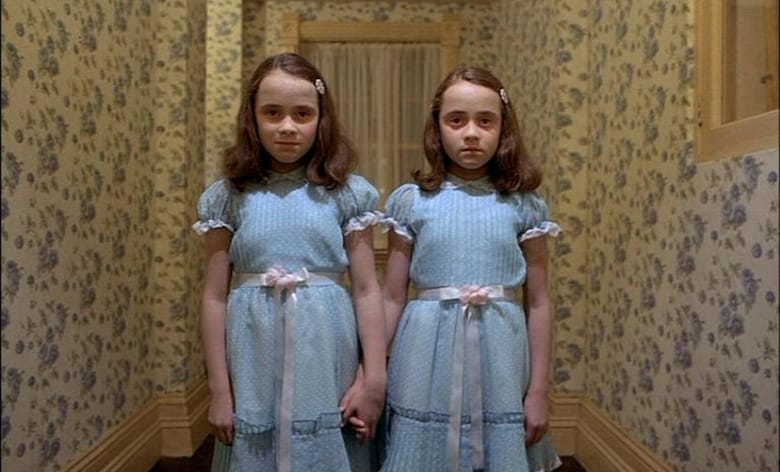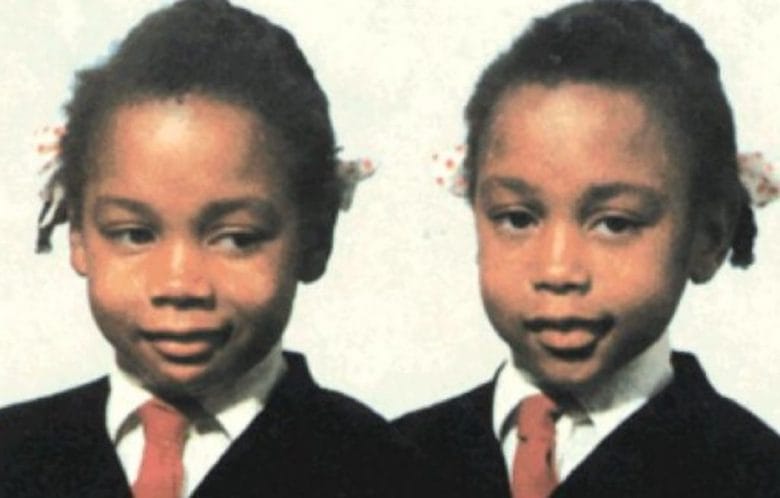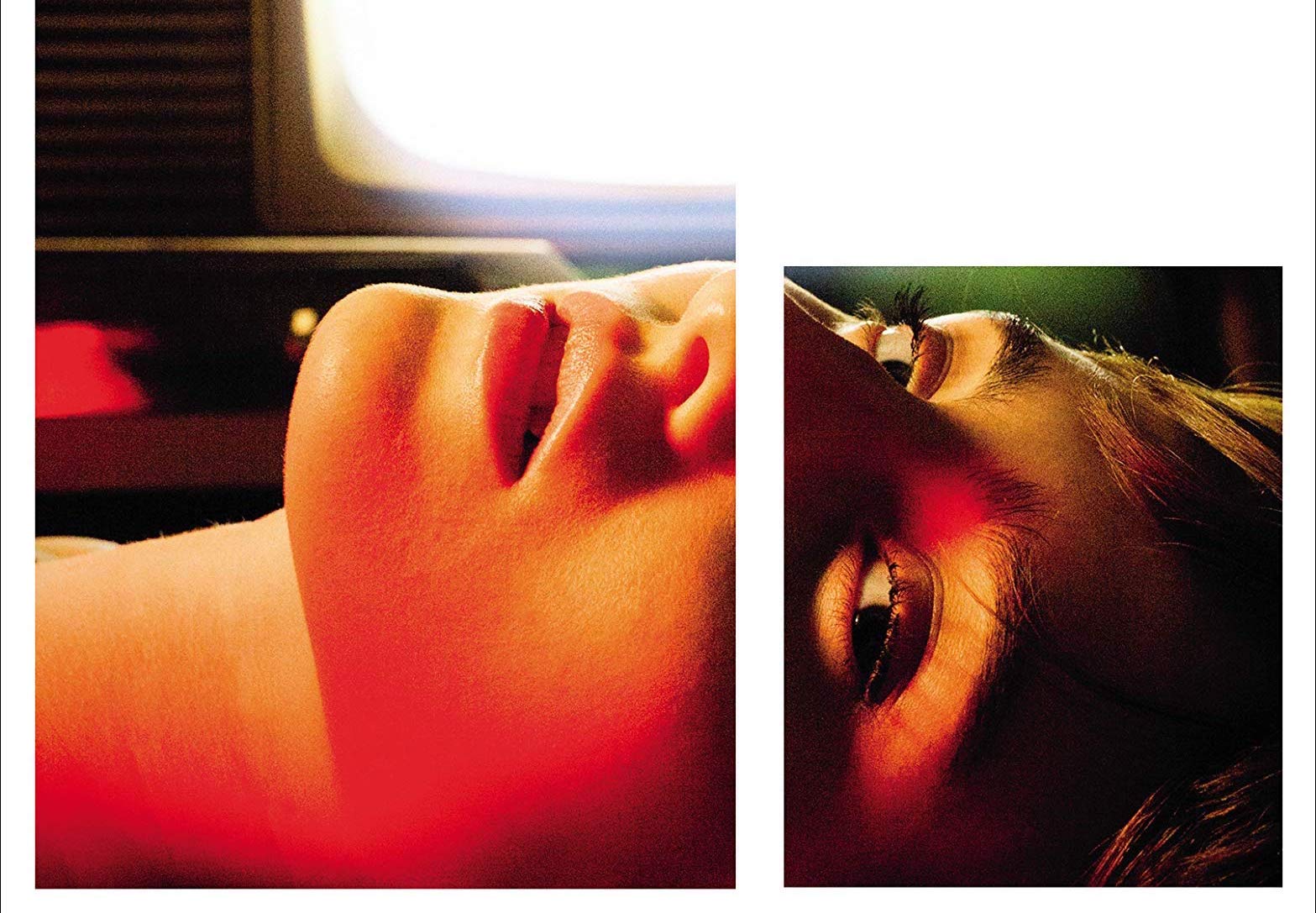Twins are a horror staple. From the little girls in The Shining (Kubrick’s version, “Come play with us, Danny!”) to Elas and Lukas in Goodnight Mommy, these little replicas of one another have freaked us out over and over again.
Children in general are freaky in horror, there’s a great sense of “they don’t belong here,” and this has been the topic of numerous volumes of study. The De-Innocence of a child through moral, religious, and social subversions of what we believe we understand to be ‘childhood’ is a powerful narrative in horror.
To split this fear into two mirrors of one another further repulses us as readers. As Ross from Friends says in The One with the Apothecary Table, “You know what I think?… She’s weird. Twins are weird.”
Sisters by Daisy Johnson
Bookstagram, and horror aficionados on Twitter and Insta may have already heard of Daisy Johnson’s latest contribution to the literary world – the innately creepy, Sisters (Jonathan Cape: 2020). While July and September from Johnson’s novel are not twins – just sisters born very close together – they operate in an extremely similar way to how twins are clichéd throughout all media.

“When one of us speaks we both feel the words moving on our tongues. When one of us eats we both feel the food slipping down our gullets. It would have surprised neither of us to have found, slit open, that we shared organs, that one’s lungs breathed for the both, that a single beat a doubling, feverish pulse.”
This symbiosis between July and September is a palpable, frightening connection that attacks the foundations of Western ideals of identity – that each of us are unique. In fact, Dona Lee Davis in her book Twins Talk: What Twins Tell Us about Person, Self, and Society (Ohio University Press: 2014) discusses an incident at the 2007 International Congress of Twin Studies where she (one of a pair of twins) was chastised for using the term “identical” instead of “monozygotic.” The inference here is that no two people are wholly identical.
There’s value to this, but not in literature. In literature, as in Sisters by Daisy Johnson, twins challenge our notion of identity and self-image through mirroring actions that ostracize the wider community from the intense bond of their relationship.
The Silent Twins
The feeling of being ostracized from ever truly knowing a twin in the way their twin does can be tangible and violent. June and Jennifer Gibbons (month names seem to be popular!) were twins raised in Wales who gained infamy for their bizarre pact.
Close to the point of a cryptophasia diagnosis (essentially ‘twin-language,’) the twins withdrew into a world of their own division, resulting in a long stay within Broadmoor psychiatric facility.

It was on their transfer to the Caswell Clinic that the pact was revealed. Jennifer Gibbons, who has since been ruled as having died from natural causes, passed away. Each twin had agreed that, should one die, the other must reconnect with the world and try and live a normal life.
July and September made no such pact.
Sisters by Daisy Johnson Explained: The “Twist”
(Spoilers)
It comes as no surprise to anyone familiar with the horror genre that one of the twins in Sisters was dead all along and that July was “I see dead people”-ing her sister, September. That’s not to say that there are no twists left; there’s still more to come in this book, with a build up to what happened on a tennis court completely upending the entire story. But why does horror love a twin set up so much?
There’s a gothic root to this, as is the case in most horror. The idea of the “evil twin” is made famous by Dr Jekyll and Mr Hyde. Mr Hyde is – in layman’s terms – all the evil, repugnancy, filth, and violence that Dr Freud would later coin as the “unconscious.” Gothic stories often deal with the fine balance between civilization and (apparent) barbarism. The hedonistic impulses that drive humanity are things that should be quashed and quelled deep within ourselves in order to gain some semblance of enlightenment. It is no coincidence that Gothic stories became voraciously popular during the Victorian era, which espoused these ideas emphatically.
— FOUNDATIONS OF HORROR —
Further explore these subgenres & tropes. more>>
#Gothic horror | #Creepy Kids

Horror has taken this trope and diluted it. Instead of the twin being a literal manifestation of evil, they are often memories of the side of the protagonist that they try and admit are no longer part of themselves. This is where Daisy Johnson shines. In Sisters Daisy Johnson takes this trope and roughhouses it into submission. Like “The Silent Twins,” but without the formality of a pact, July finds herself no longer protected and insulated against the world by her sister. Instead she is left exposed, vulnerable, and scared. However, she doesn’t reject the memory of her sister, instead, she begins to slowly consume the visage she conjures in her head until she is able to begin mimicking her sister’s confidence, strength, and violent edge.
Daisy Johnson’s Sisters evoked two memories for myself. The first is the end of the Goosebumps novel I am Your Evil Twin by R.L. Stine where the ending shows that the wrong twin has been (I genuinely cannot remember what actually happened… vanquished?) vanquished and the evil twin is left to consume the other’s identity. And the infamous scene with Martin Vail and Ed Norton in Primal Fear (1996), of course, where Vail utters those terrifying words… “So there never… there never was a Roy?”
While there was a September, her departure kills the essence of July that felt like it needed September to thrive. Through her death, September imparts on July a warning she had given to July over the years. July promised that she should die before September. No matter what, September should survive. Sisters is then a story about a kept promise.
Twins might be weird, but they show us a connection between two humans that isn’t seen anywhere else in literature or reality. Take that, Ross.
Last Updated on March 6, 2022.

